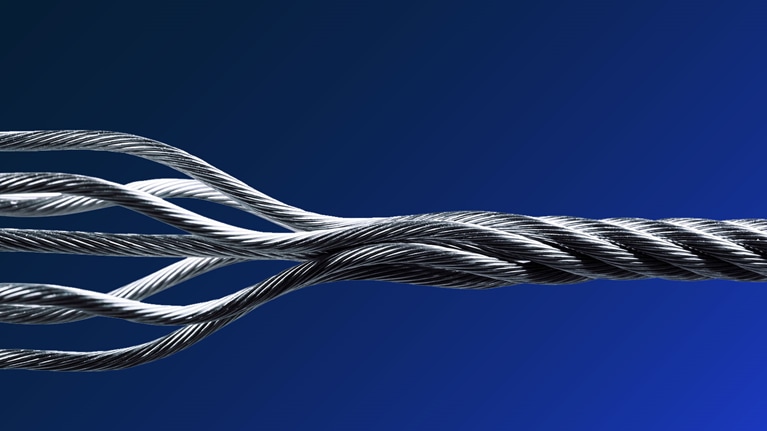Use cases lie at the heart of any digital transformation. Each use case—or group of related use cases—in one part of the operation should capture a particular business opportunity and deliver significant impact. Stacking multiple use cases together then unlocks the truly transformative power of digital operations.
Because it’s not always realistic to implement a full transformation in one go, many companies proceed in stages, driving a related series of use cases to scale in one part of the business before turning their attention to the next group of opportunities. This is not necessarily a problem, as long as the company’s leaders have a vision of what their target and how the pieces fit together.
But that’s where it’s easy to fall short. A common problem that manufacturers face when they build their digital transformation stage-by-stage is that they work in silos and separately build similar solutions, such as analytics models for different business purposes that share common elements. At best this makes for duplication, but more often than not it also increases complexity by resulting in distinct point solutions that can’t communicate even within a single factory—let alone in a manufacturing network or along the value chain (Exhibit 1).

Not only does this keep manufacturers from capturing the value they had targeted, retrofitting the system for solutions to communicate centrally and with each other can be as time-consuming and expensive as building it in the first place.
Would you like to learn more about our Operations Practice?
Why reference architecture matters
To avoid these digital dead ends, once manufacturers have selected the use cases—which collectively will compose a tailor-made Industrial Internet of Things (IIoT)—that will drive the transformation, they need to develop a robust reference architecture to connect the dots and guide these pieces into place.
The simplest way to think of a reference architecture is how a company curates the unique technical capabilities that will deliver its vision for digital operations, and connects them throughout the value chain via its technology stack. This objective can be thought of as the “north star,” towards which all transformation efforts should be directed.
The reference architecture is essentially a concept diagram that maps the route to this north star. It needs to be agreed upon and put in place early in the transformation—certainly before progressing any use cases to pilot mode.
Pragmatically, the reference architecture is populated layer-by-layer with the technology—and new ways of working—that will drive the use cases. These tech choices need to work in both directions; they need to deliver the particular solution, and they also need to integrate into the technology stack. These tech-stack requirements should be specified for the top use cases first and synthesized into the broader stack requirements, paying special attention to ad hoc “edge” data integration (Exhibit 2).

Once the reference architecture is fully populated with tech choices, the next step is to look at historical and current IT and operational technology (OT) stacks to identify gaps. It’s also important to look across manufacturing applications and tools, at both the plant level and across the whole enterprise. If you have implemented IIoT pilots previously, now is the time to reexamine them to understand the factors that prevented them from achieving scale.
Incorporating data expertise up front will avoid delays and needless iteration during implementation. Data engineers know the data they will need to have when building their analytics models, so they need to play a role in the design of the reference architecture. It’s critical that they work closely with the plant’s process engineers to ensure that the data can be both collected accurately at source and aggregated into the right location at the right time, and in a manner that can realistically be used to drive operational impact.

A scalable IIoT tech stack starts with business-focused use cases
The reference architecture doesn’t need to be up and running from the very beginning, but it needs to be defined, and it needs to be flexible enough that it can change with time as the transformation takes shape and new opportunities present themselves. Companies should not be concerned if plans change throughout their transformation; rather, they should embrace the opportunities. Indeed, one of the key opportunities provided by the Fourth Industrial Revolution is the ability to experiment at pace when exploring the possibilities of digital operations, and to fail fast and move on without undue pain.
One large industrial company recently implemented an advanced reference architecture when it embarked on a digital transformation. That step enabled it to immediately collect and analyze data from three use cases—utilization tracking, dynamic routing, and fuel optimization—to identify even more use cases it had not previously considered. When introduced, the new use cases paved the way for rapid deployment of autonomous vehicles: a fundamental overhaul of its operations. It could never have achieved such an outcome so quickly if it had followed a rigid, stage-by-stage transformation and tried retrofit new ideas.
While rapid experiments won’t always result in such a dramatic industry-grade solution, the investment is likely to be in terms of weeks or months rather than years, and tens of thousands of dollars instead of many millions. The reference architecture is central to this flexibility.
Our next article will consider how to select the technology that will drive use cases, as well as the platform choice that underpins digital manufacturing operations.


